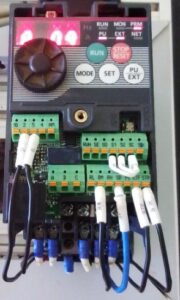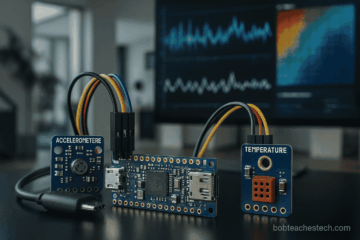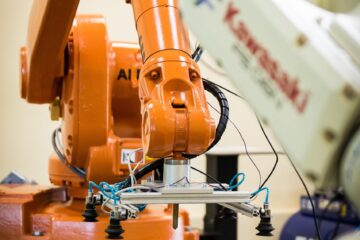Learn how Variable Frequency Drives (VFDs) operate, configure speed and torque settings, troubleshoot common issues, and apply them to real-world applications. This detailed guide covers everything you need to optimize motor performance for energy efficiency and reliability in industrial settings.
Variable Frequency Drives (VFDs) are essential electronic devices used to control the speed and torque of electric motors. By adjusting the frequency and voltage of the supplied power, VFDs provide improved efficiency, reduced wear, and precise operational control in various industrial automation applications.

Figure 1. Mitsubishi electric VFD wiring terminals. Image used courtesy of the author.
Why Are VFDs Important?
- Energy Efficiency: VFDs adjust motor speed to match system demands, reducing unnecessary energy consumption.
- Process Optimization: By offering precise speed control, VFDs ensure product consistency and quality.
- Equipment Longevity: Controlled acceleration and deceleration prevent mechanical strain, extending motor life.
- Maintenance Reduction: Predictive diagnostics and error monitoring simplify troubleshooting and reduce downtime.
How VFDs Work
A VFD works by processing electrical power through three key stages:
- AC to DC Conversion: The input AC power is rectified into DC using a diode bridge or thyristor circuit.
- DC Bus Regulation: The converted DC is filtered and regulated using capacitors to maintain a stable voltage.
- DC to AC Conversion: The inverter uses insulated gate bipolar transistors (IGBTs) to produce an adjustable AC output, controlling the motor’s speed and torque.
Motor Speed Control
Motor speed is determined by the frequency of the AC supply. The following formula calculates motor speed:
By altering the frequency, VFDs regulate motor speed with high precision, making them ideal for applications requiring variable speeds.
Configuring a VFD for Optimal Performance
Follow these steps to ensure proper VFD configuration:
- Parameter Initialization: Label the VFD with a unique identifier.
- Motor Data Entry: Input essential motor specifications, including rated voltage, current, frequency, and RPM.
- Frequency Range Settings: Adjust the minimum and maximum frequencies according to the motor’s capabilities.
- Acceleration and Deceleration Times: Set times that allow smooth speed changes without damaging mechanical components.
- Control Mode Selection:
- V/Hz Control: Ideal for simple applications with constant torque needs.
- Vector Control (Closed Loop): Preferred for applications requiring accurate speed and torque control.
- Torque Boosting: Adjust the settings to provide extra torque for heavy loads.
- Protection Settings: Configure protection against overvoltage, overcurrent, and overheating.
Example Configuration:
- Motor Frequency: 50 Hz
- Acceleration Time: 5 seconds
- Deceleration Time: 5 seconds
- Voltage Boost: 10%
- Control Mode: Vector Control (Closed Loop)
Real-World Application of VFDs
In a conveyor system, VFDs adjust motor speed based on material flow rates. Sensors monitor the load, sending real-time data to the VFD, which then modifies the motor’s speed to maintain optimal operation.
Implementation Steps:
- Input Signal: Operators set the desired speed using an HMI or PLC.
- VFD Control: The VFD adjusts the frequency and voltage to regulate motor speed.
- Feedback Monitoring: The VFD continuously monitors load variations and adjusts the motor output as needed.
Benefits:
- Improved energy efficiency
- Smoother motor acceleration and deceleration
- Reduced material spillage
- Increased motor lifespan
Troubleshooting Common VFD Issues
VFDs are reliable, but operational issues can arise. Here’s how to diagnose and resolve common problems:
- Motor Not Starting: Verify the input voltage, check parameter settings, and confirm proper signal input.
- Overvoltage or Overcurrent Alarms: Adjust acceleration rates, inspect for load blockages, and ensure no sudden mechanical resistance.
- Unstable Motor Speed: Check feedback sensors and PID control settings in closed-loop systems.
- Excessive Heat: Ensure adequate ventilation, inspect cooling fans, and monitor ambient temperatures.
Best Practices:
- Conduct regular inspections and monitor VFD error codes.
- Schedule preventative maintenance to prevent unexpected failures.
- Update firmware for enhanced functionality and security.
- Maintain proper ventilation around the VFD unit.
Expanding Your VFD Knowledge
A solid understanding of VFD configuration and troubleshooting allows for efficient motor control and increased system reliability. VFDs play a critical role in energy management, process optimization, and predictive maintenance. For further learning, explore applications in HVAC systems, water treatment facilities, and renewable energy projects.


